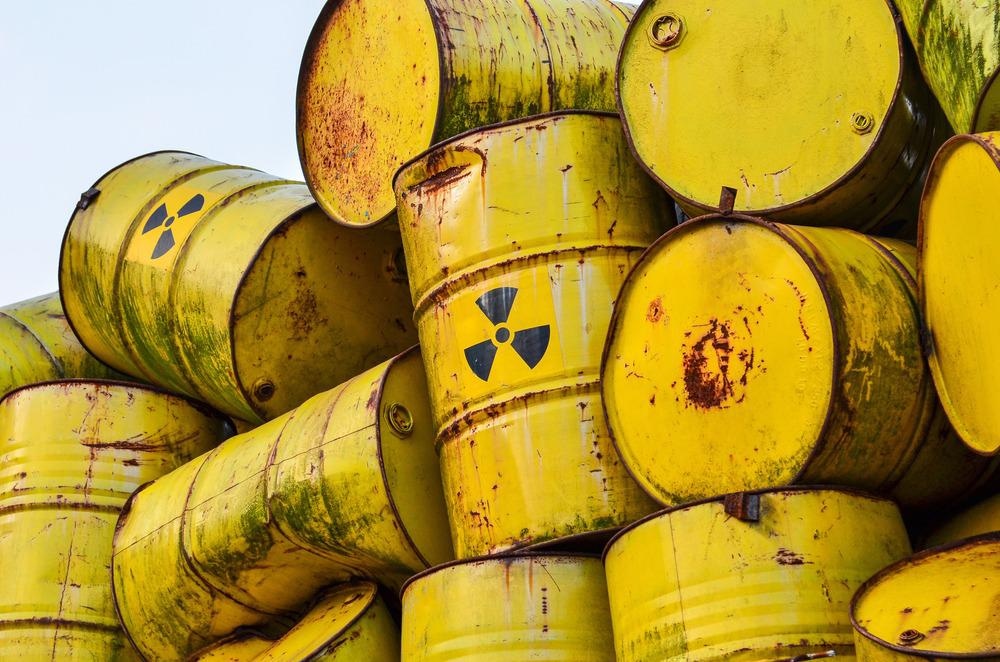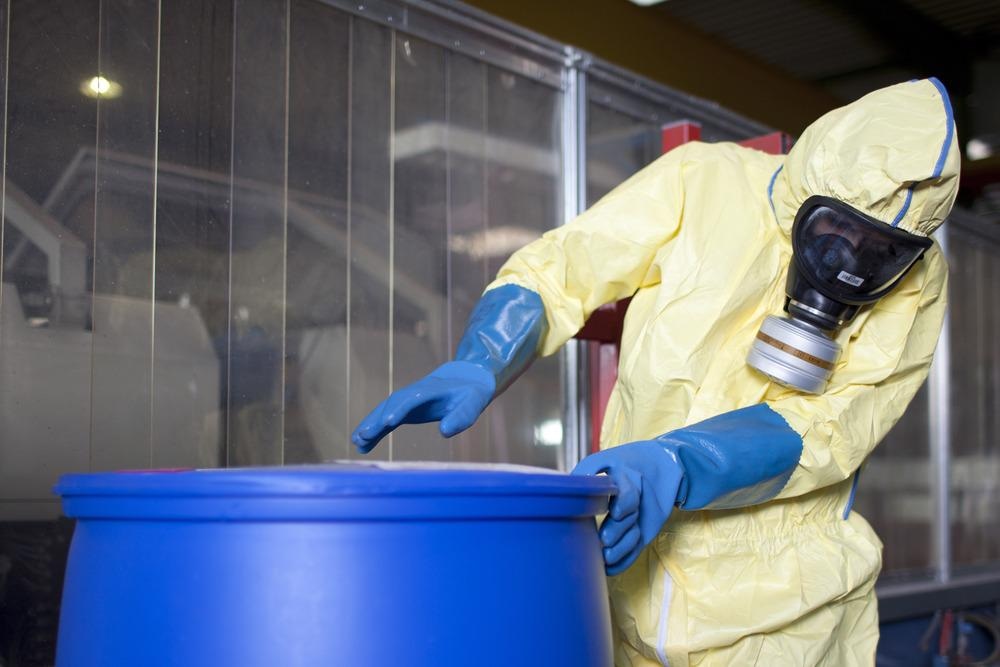This article considers nuclear waste production, treatment, and recycling.

Image Credit: Zoltan Acs/Shutterstock.com
What is Nuclear Waste?
With the expansion of industries to cope with human needs, the use of nuclear energy for the production of electricity has increased substantially to fulfill energy needs. Nuclear power, like all businesses and energy production systems, generates waste material. Externally, nuclear waste resembles the fuel that was fed into the plant — often bundles of tubular metal bars encapsulating uranium grains. Nuclear waste is categorized into three classes based on its radioactivity: low-level, intermediate-level, and high-level.
A significant amount of waste (90 percent of total volume) is made up of just moderately contaminated objects, such as gear and work apparel, and comprises only 1% of overall radioactivity. High-level waste, on the other hand, accounts for just 3% of the total waste volume but contains 95% of total radioactivity.
It is largely made up of used nuclear (also referred to as spent) fuel that has been categorized as waste from nuclear reactions. The majority of the radiation linked with nuclear energy is still retained in the fuel that was used to generate it. As a result, spent fuel is designated as high-level nuclear waste.
Hazards of Nuclear Waste
When a nucleus breaks, a considerable amount of energy is quickly released and transported away by a cooling agent to conduct beneficial work. Energy, on the other hand, persists to be generated for hundreds of years after the atom breaks. The afterglow heat is what renders nuclear waste dangerous.
Unlike most harmful waste, nuclear waste degrades over time, which is highly unusual. Because of these delayed energy releases, nuclear waste is extremely radioactive. It is so dangerous when it initially comes out of the reactor that if a person stood close to it while it was unprotected, the person would get a deadly radiation dosage within a few moments and expire of acute radiation.
Importance of Nuclear Waste Treatment
Treatment and conditioning methods are used to transform a wide range of nuclear waste substances into types appropriate for future administration, such as transit, containment, and disposal. The primary goals are to minimize the proportion of trash that must be managed through treatment operations and to potentially reduce the toxicity of the material.
Recycling of Nuclear waste
Although some nations, especially the United States, consider discarded nuclear fuel to be garbage, the majority of the substance in old fuel may be repurposed. Approximately 97 percent of it might be utilized as a fuel in certain types of reactors, with uranium accounting for the great bulk (94 percent).
So far, most recycling efforts have concentrated on the recovery of plutonium and uranium, both of which can be reused in traditional plants. This segregated plutonium and uranium can then be combined with new uranium to develop new reactor fuel.

Image Credit: Adam Gregor/Shutterstock.com
Treatment Techniques and Processes
High-Level Waste (HLW) is generally created in the form of liquid as a byproduct of the processing of depleted nuclear plant material. In a furnace, liquid HLW is combined with broken glass to make a melted substance. The melted material is then emptied into stainless steel containers that store around 150 liters of trash. This is known as 'vitrification,' because it turns the waste into a stable, solid-state suitable for long-term storage and disposal.
Intermediate Level Waste (ILW) may require treatment before packaging for removal and handling. Super-compacting, slicing, or drying may be used in treatments. Since 1959, the majority of Low-Level Waste (LLW) from around the UK has been dumped at the Low-Level Waste Repository (LLWR) in Cumbria.
Previously, the material was put in waste disposal ditches, but it is now grouted in metal cans before being stored in concrete-walled, highly constructed vaults. When the vaults are filled, a lid will be placed over the vessels. The Dounreay location in the north of Scotland also features a new LLW repository. A very tiny proportion of solid LLW, especially graphite from fuel rods, cannot be treated in existing plants due to the risk of exceeding permissible radiation limits.
The nuclear industry produces a wide range of low and moderate-level liquid wastes. In nuclear facilities, conventional liquid waste treatment processes such as alkaline treatment, adsorption, purification, electrochemical treatment, and distillation are used. These procedures have drawbacks, such as the inability to remove all pollutants, high operating costs, and the possibility for considerable secondary solid waste generation.
Latest Treatment Techniques
The latest research with the primary goal of minimizing nuclear waste materials deals with various significant aspects that were adjusted in the latest study to determine the ideal circumstances for uranium recovery from nuclear waste utilizing Tri-butyl-phosphate absorbent material.
The results revealed that adding the acid content, extraction solvent amount, and combining duration boosted extraction efficiency. With a recovery yield of 76% and a distribution coefficient of 3.3, phosphoric acid was chosen as the best alternative.
Another study demonstrated the slow pyrolysis of epoxy resin from nuclear waste specimens. The major goal is to determine the favorable environment for removing hydrogen from leftover nuclear waste to prevent hydrogen formation throughout preservation and thus eliminate any danger of overpressure and detonation.
Investigations on a prototype burner were carried out after researching the effect of temperature on the pyrolysis equilibrium. At a constant temperature, the plateau time was shown to be the sole essential property for decreasing the remaining hydrogen concentration in the char. Other studies focusing on the removal of Uranium (VI) ions from aqueous nuclear wastes are also being researched to increase its effectiveness.
Future Perspective
The need of the hour is to start working on the development of a global treatment technique policy in the future. The treatment and management of nuclear waste is primarily a national policy issue that requires state actions.
A strategy for radioactive material treatment and management should outline goals, duties, processes, and resource allocation in a federal program while resolving numerous ethical considerations. Establishing a well-defined policy would also direct and assist technological initiatives, including technological improvements required to efficiently support nuclear waste treatment.
In short, essential steps are taken to ensure no harm from nuclear wastes is done to the public. The storage, transportation, and treatment processes have a huge role in all this process. Hence, researching to improve all these methods is crucial ensuring a lot of benefits in the long run.
References
Duan, Z. et al., 2021. Application of pyrolysis to remove hydrogen from an organic nuclear waste. Journal of Hazardous Materials. 401. 123367. Available at: https://doi.org/10.1016/j.jhazmat.2020.123367
Ghaemi, A. & Hemmati, A., 2021. Experimental investigation of uranium extraction from the industrial nuclear waste treatment plant by tri-butyl-phosphate. Journal of Radioanalytical and Nuclear Chemistry, 327, pp. 1237-1249. Available at: https://doi.org/10.1007/s10967-021-07607-0
Richard Wolfson; Ferenc Dalnoki-Veress, 2021. "9 Nuclear Waste and Fuel Cycles," in Nuclear Choices for the Twenty-First Century: A Citizen's Guide , MIT Press, pp.165-200 Available at: 10.7551/mitpress/11993.001.0001
Yim MS. (2022) Policy and Regulations for Nuclear Waste Management. In: Nuclear Waste Management. Lecture Notes in Energy, 83. Springer, Dordrecht. Available at: https://doi.org/10.1007/978-94-024-2106-4_2
Disclaimer: The views expressed here are those of the author expressed in their private capacity and do not necessarily represent the views of AZoM.com Limited T/A AZoNetwork the owner and operator of this website. This disclaimer forms part of the Terms and conditions of use of this website.